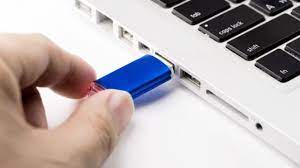As reliable as modern software is, sometimes things can go wrong. If this happens at the operating system level, you’ll probably need to perform a fresh install. In such cases, having a rescue USB on hand always comes in handy.
What is a rescue USB
A rescue USB is a flash drive you keep around to fix or “rescue” your PC when it breaks down to the extent that you can’t boot an operating system. Typically, these are bootable flash drives you create to install Windows, Linux, or macOS.
A rescue drive is a bootable media device; your system reads the OS information stored on the drive and boots from it. This allows you to make critical changes and improvements to your OS – changes you couldn’t otherwise make while the system was running.
Apart from bringing your PC back from the dead, these rescue USBs can also be pre-installed with utilities to diagnose parts in your computer and troubleshoot any potential problems. These third-party tools (which vary depending on your OS) can scan everything from your storage drives to your system memory, so you can get a better diagnosis when fixing your PC.
How to Create a Rescue USB
Creating a rescue USB is easy, but the process depends on your operating system. Just keep in mind that you need a USB drive with at least 8GB of capacity and formatted properly for the OS you’re working with.
Windows
Windows has a built-in tool that helps you quickly create a recovery drive that will also save your system files so you can get back to work quickly. All you have to do is input Create a Recovery Drive in the Windows search tool, select Best Match, and follow the wizard.
Alternatively, try the Windows 11 Media Creation tool to get a clean Windows install. This method is recommended when you want to reset your PC and start fresh.
MacOS
The process of creating a macOS recovery drive is a little more complicated. You need to download the appropriate macOS version from the Apple App Store, create a flash drive with at least 14GB of space, and format it as Mac OS Extended.
Make sure to replace Drive at the end of the command with the volume name of your USB drive. After that, you can use this recovery USB to turn on your Mac whenever you want, although you should try using macOS Recovery before reinstalling your operating system.
Linux
The steps required to create a recovery USB will vary depending on your Linux distro. That being said, having a Linux rescue USB simply requires installing a bootable USB drive on the Linux distro of your choice. You can also install multiple operating systems on a single USB drive for more convenience.
In Ubuntu, you can use the Startup Disk Creator tool to create a bootable copy of your OS installation. Alternatively, you can also use tools like Rufus or Etcher to create a bootable Linux drive that will act as an installation, live testing, and recovery drive at the same time.
Yes, you need a rescue USB on hand
A rescue USB is not something you will carry around with you, as the chances of catastrophic system failures in your daily use are low. After all, you can live on your PC for years without ever having a problem so severe that it won’t even boot.
That being said, when you break your system to the point that you can’t use the OS to fix any problems, using a rescue USB will save you a lot of time and in most cases, all of your system configuration and data, as well as give you a way to quickly reinstall your OS or diagnose and troubleshoot issues on your system.
It’s not a lot of work to create one, and you don’t need a lot of technical sophistication to do it either. And all the time and hassle you’ll save when you use it to rescue your system the first time will be well worth the effort.
I recommend creating it and updating it once every six months. Even if you don’t update it completely, as long as you have the right OS version, it will still be effective enough to fix your PC, you just have to catch all the updates, which is a simple task as updating your OS itself.
Yes, it may be years or even a lifetime before you need it, but the day you break something on your system, whether you’re just tinkering with settings or trying to overclock, having a rescue USB is the backup you’ll need to get your PC back up and running again quickly and effectively.


